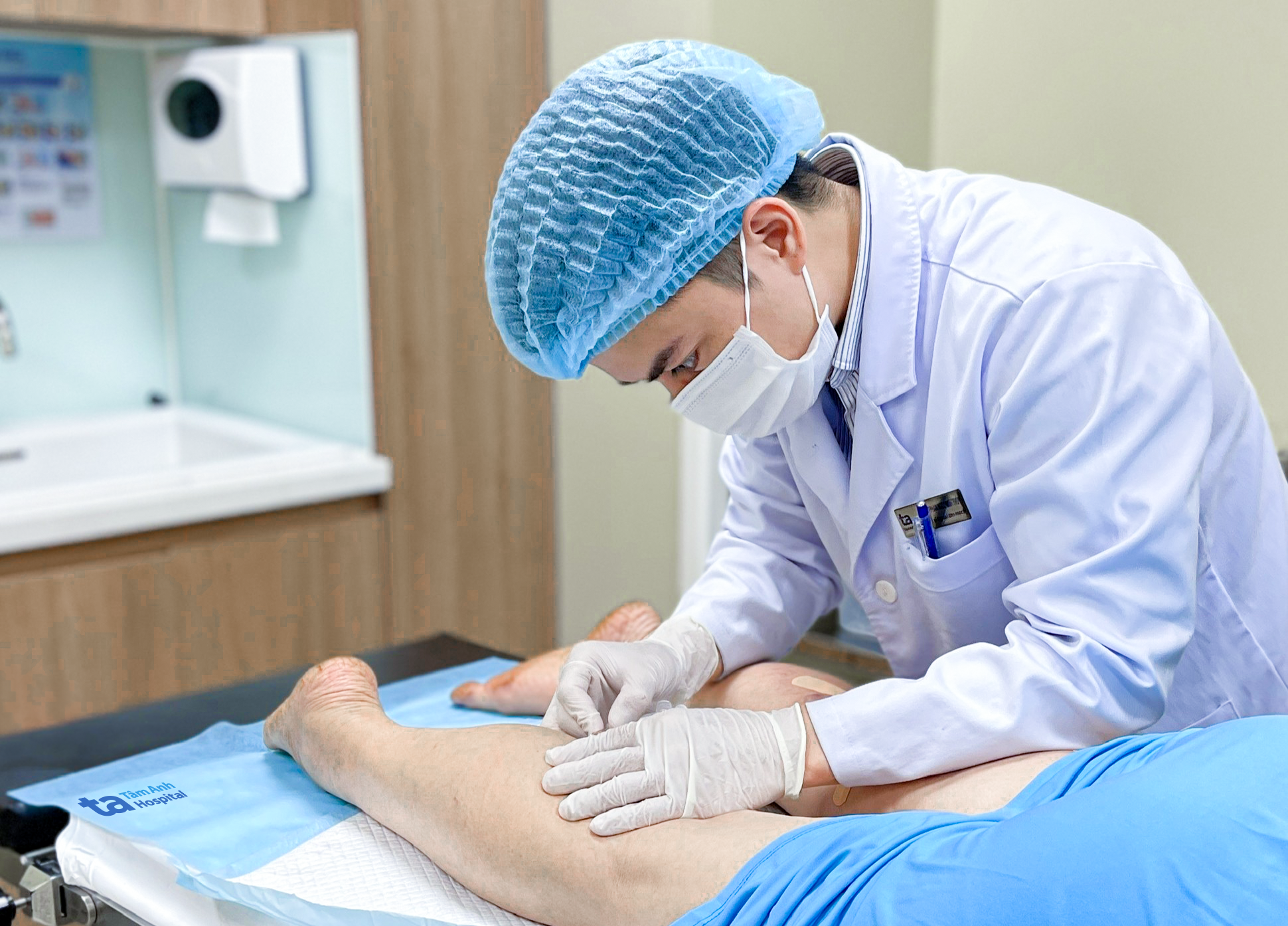Varicose veins can progress through stages, starting with spider veins and thin blue veins (mild), then prominent veins with slight leg swelling and increasing pain (moderate), and finally, darkened skin around the ankles, significant swelling, and non-healing leg ulcers (severe). If left untreated, complications such as deep vein thrombosis, thrombophlebitis, and chronic obstruction can occur, leading to prolonged pain.
Dr. Pham Ngoc Minh Thuy, a cardiovascular specialist at Tam Anh General Clinic, District 7, advises people with signs of varicose veins to seek early diagnosis and treatment to prevent complications. Sclerotherapy is a commonly used procedure worldwide, suitable for mild to moderate varicose veins. Doctors inject a sclerosing solution into the vein using a small needle, creating a local inflammatory reaction that causes the vein walls to stick together, sclerose, and close completely. After the procedure, patients receive compression bandaging or wear medical stockings to enhance the effectiveness.
 |
Dr. Thuy performs sclerotherapy on a patient. Photo: Tam Anh General Clinic, District 7 |
Dr. Thuy performs sclerotherapy on a patient. Photo: Tam Anh General Clinic, District 7
According to Dr. Thuy, sclerotherapy does not require anesthesia, leaves no scars, and causes minimal pain. Veins appear less prominent under the skin's surface, and patients can walk and do light activities immediately after treatment. Minor side effects may include transient burning, bruising, and skin discoloration at the injection site. Some cases may require combination with other techniques such as endovenous laser treatment, radiofrequency ablation (RFA), or surgery for large, complex varicose veins.
Lower extremity varicose veins often occur in workers due to reduced vein elasticity and valve strength after the age of 40. When valves weaken or become damaged, blood flows backward, pooling and causing veins to dilate and become visible under the skin. People who stand or sit for extended periods, lift heavy objects, exert themselves physically, are overweight, have a sedentary lifestyle, have given birth, or are approaching menopause are at higher risk. Initial symptoms include heavy, tired, or numb legs at the end of the workday, but these are often overlooked.
Alongside treatment, patients should maintain healthy lifestyle habits to manage the condition. This includes moderate-intensity walking, swimming, or cycling for 30 minutes daily; avoiding prolonged standing or sitting in one position; taking short walks every 1–2 hours; rotating ankles or raising heels; and elevating legs with pillows while lying down to improve blood circulation. Weight management to reduce pressure on the lower limbs, wearing medical stockings, and regular check-ups also help alleviate symptoms.
Ngoc Chau
| Readers can submit questions about cardiovascular diseases here for doctors to answer. |












